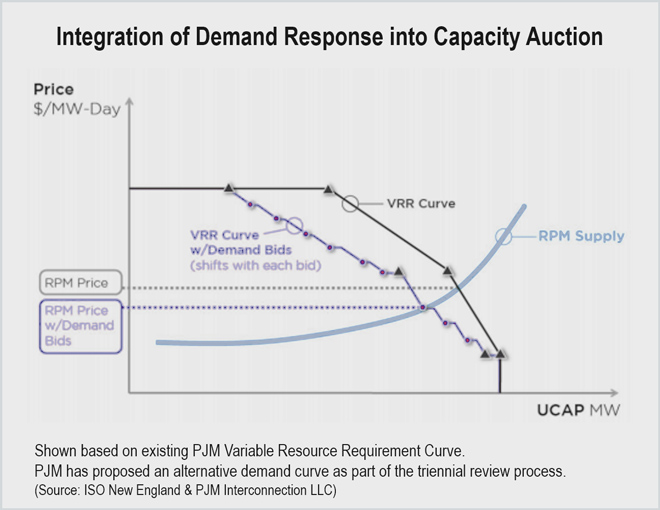By William Opalka
ISO-NE is considering delaying full integration of demand response into its markets by a year due to uncertainty about the Federal Energy Regulatory Commission’s authority over the resource.
A 33-page Markets Committee contingency plan released April 17 suggests not implementing DR until 2018 because of the time needed to develop procedures once the issue is resolved.
The U.S. Supreme Court was scheduled to consider FERC’s appeal of the D.C. Circuit Court of Appeals decision threatening the agency’s jurisdiction at its conference Friday. But no decision was announced Monday and the court said no news is likely for at least a week.
The D.C. Circuit vacated FERC Order 745, which set rules for compensating DR in RTO energy markets, saying the commission had intruded on state jurisdiction (Electric Power Supply Association v. Federal Energy Regulatory Commission). There is disagreement over whether the ruling also voids FERC jurisdiction over DR in the capacity and ancillary services markets. FERC filed its appeal with the Supreme Court in January. (See FERC Files EPSA DR Appeal with Supreme Court.)
“Without direction from the U.S. Supreme Court and the FERC, the region’s next steps are uncertain,” according to ISO-NE’s plan. “Possible scenarios range from maintaining an approach that is fairly consistent with the status quo, to allowing demand response participation solely in the capacity and ancillary services markets, or to removing demand resources from the supply-side of the wholesale market platform altogether.”
If the Supreme Court grants FERC’s request for a writ of certiorari, ISO-NE said, a ruling is not likely before mid-2016. Then FERC must interpret how the court’s direction impacts the integration of DR in wholesale markets.
“In addition to the potentially protracted legal process in this case, it is also unclear how narrowly or broadly the decision in EPSA will be interpreted — primarily by the commission, but potentially by the U.S. Supreme Court as well,” the plan says.
ISO-NE had planned to implement full integration of DR into the energy and reserves markets by June 1, 2017, a transition it says will require at least two years of modifications to its software and system infrastructure.
“The ISO would be at least one year into the project to meet the June 1, 2017, implementation date before knowing the Supreme Court’s ultimate decision,” the plan says. “And for all of the time, money and effort expended up to that point, the Supreme Court may nevertheless uphold the D.C. Circuit’s previous ruling. Substantial resources will be wasted if the ISO moves forward to fully integrate demand response into the energy and reserves market by June 1, 2017, and the Supreme Court ultimately upholds EPSA.”
The Markets Committee will discuss the issue when it meets May 5-6.
FERC last month rejected as premature PJM’s contingency plan to include demand response in its capacity auctions in the event the EPSA ruling is allowed to stand. (See FERC: PJM Demand Response Stop-gap Measure ‘Premature’.)



